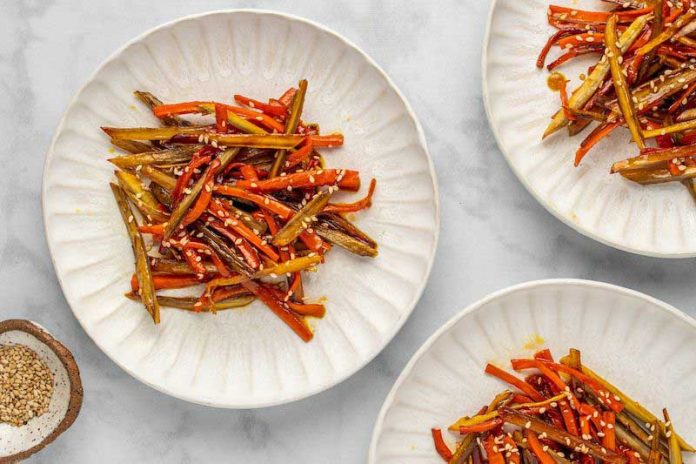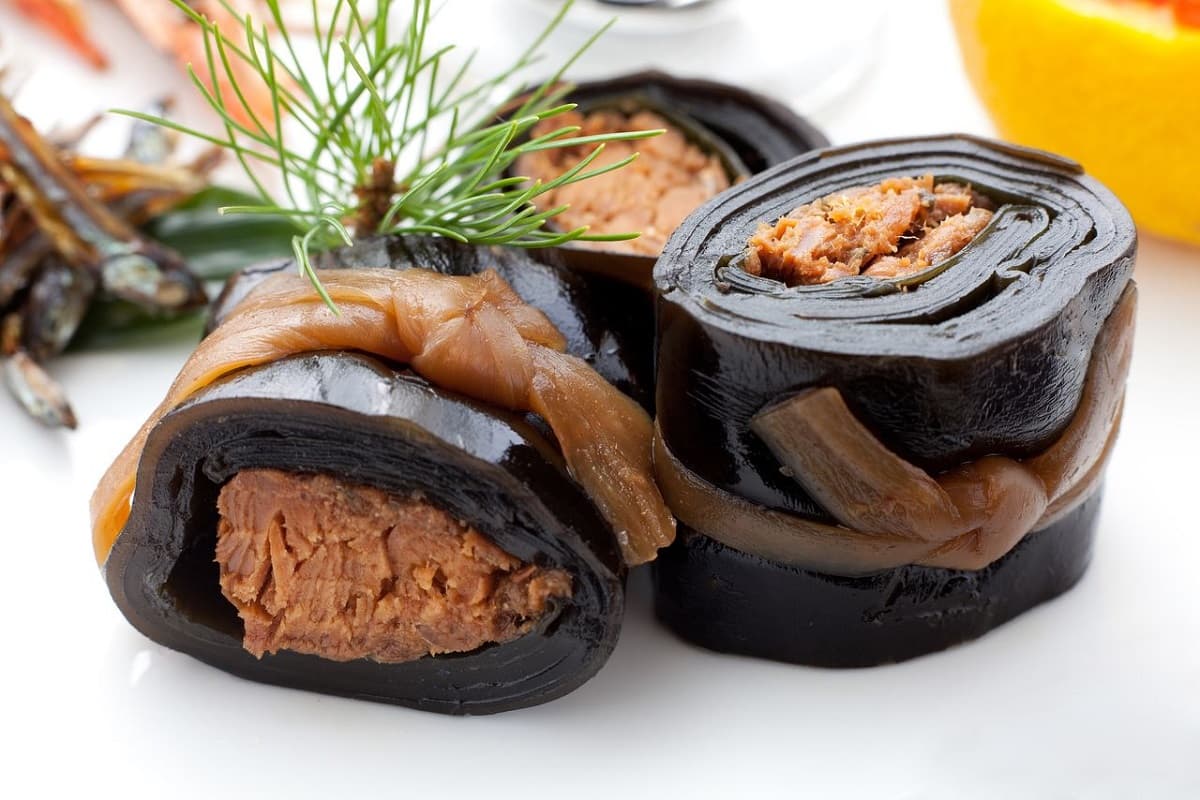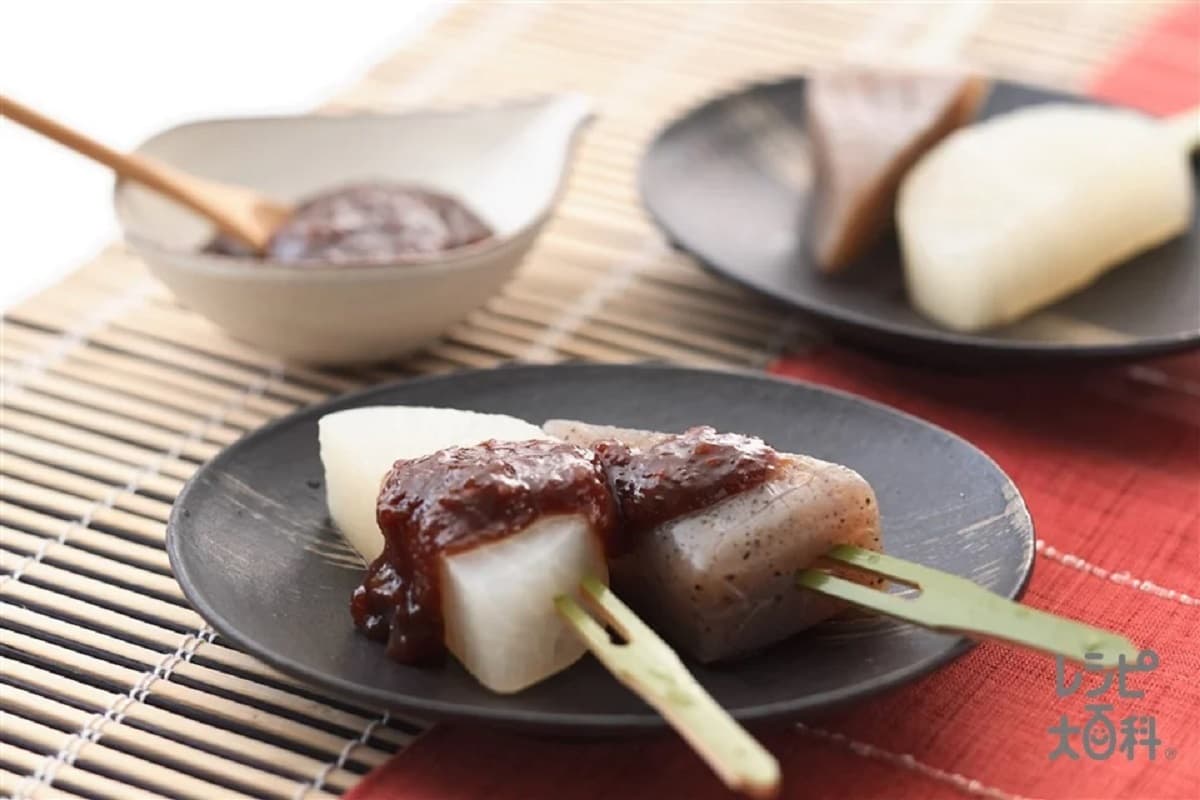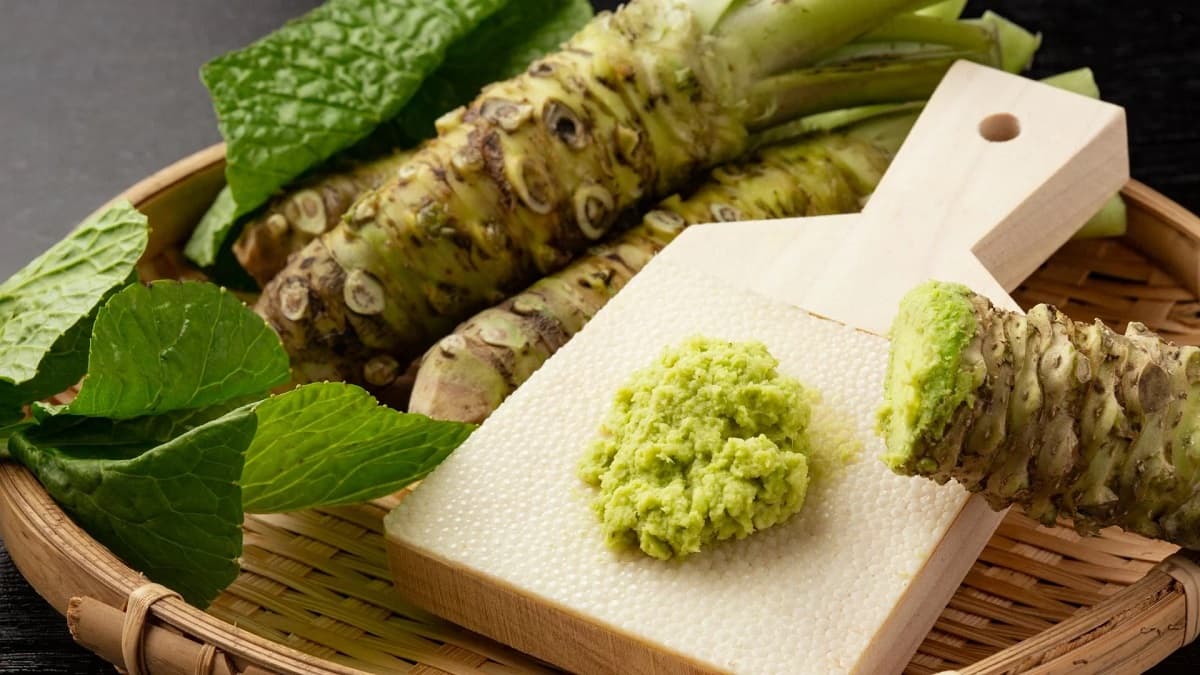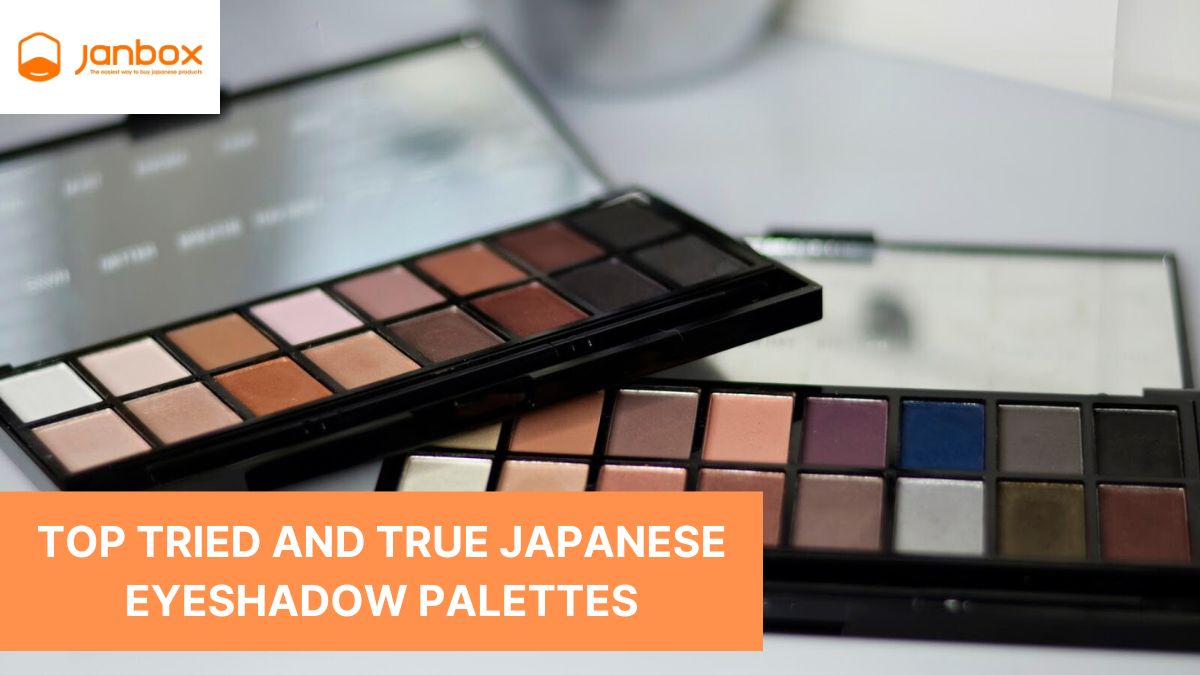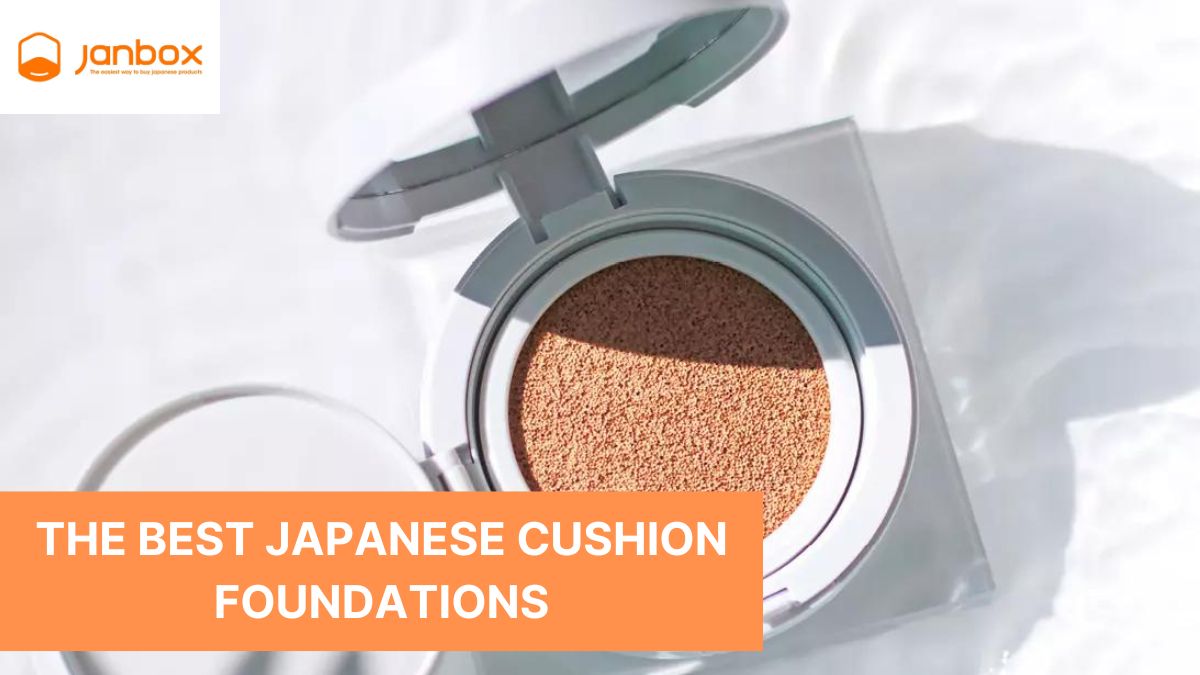Burdock (Gobo) is one of the ingredients used quite commonly in daily dishes in Japan. Burdock contains a lot of fiber. In addition, it is also said to be a diuretic, help excrete sweat, and have a blood-filtering effect. Burdock is crunchy and has the aroma of roots, a very characteristic smell. In this article, Janbox introduces a familiar dish from this ingredient, kinpira gobo.
I. The effect of Burdock – Japanese Ginseng
In Japan, Korea, and some Asian countries, burdock has been used for a long time and is used daily in traditional meals. Burdock symbolizes masculinity because it has a straight shape and is deeply rooted in the ground as a certainty and dignity.
Burdock has been a popular medicinal plant for centuries and is used to treat various ailments. Burdock root essential oil is quite popular in Europe in scalp treatments such as making hair shiny and stronger.
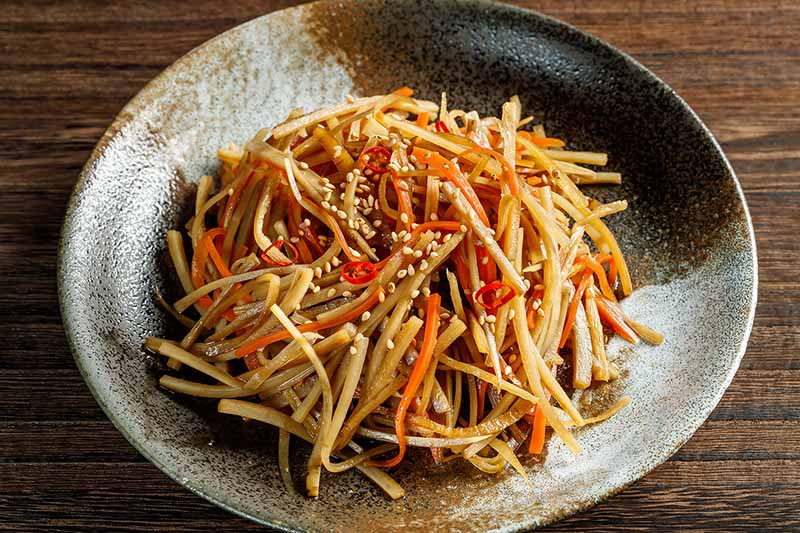
It is also used to combat itching and dandruff on the head. Modern studies show that burdock root essential oil is rich in phytosterols and fatty acids (including very rare long-chain EFAs), essential nutrients to maintain a healthy and strong scalp.
The parts of the burdock plant can be used
Burdock is often used in parts such as Roots (bulbs), and seeds (burdock). Among them, burdock root is used the most.
Parts used as medicine are seeds (burdock root), and root (burdock root). According to Western medicine, burdock root has a diuretic effect, and sweating is often used to treat numbness, swelling, joint pain, and some skin diseases.
According to Oriental medicine, burdock is spicy, bitter, cold, and has the effect of dispersing heat, clearing heat, detoxifying, and treating colds, mastitis, pneumonia, pharyngitis, salivary gland inflammation, and ear inflammation. middle, boils, measles, pox, and some cancers.

Because the tree has soldering properties, the spleen and stomach are damaged (cold in the stomach, slow to digest, do not want to eat, like to eat warm and hot, etc.) are not used.
Using Burdock Root
Although they are mainly used for medicinal purposes. But eating burdock like any other root vegetable is also very popular, especially in Japan. And they are prepared by slicing, slicing, slicing, and processing. Their earthy flavor is proven to be sublimated if cooked with juicy meats.
Once roasted or boiled, you can toss them in cereal bowls, puree them into creamy soups, and add them to hearty stews or stir-fries. Cut them into thin slices and mix them with other foods to make stir-fries or side dishes. Or, for a more holistic approach, steep the roots (and other herbs) in boiling water for about 10 minutes to make the tea.
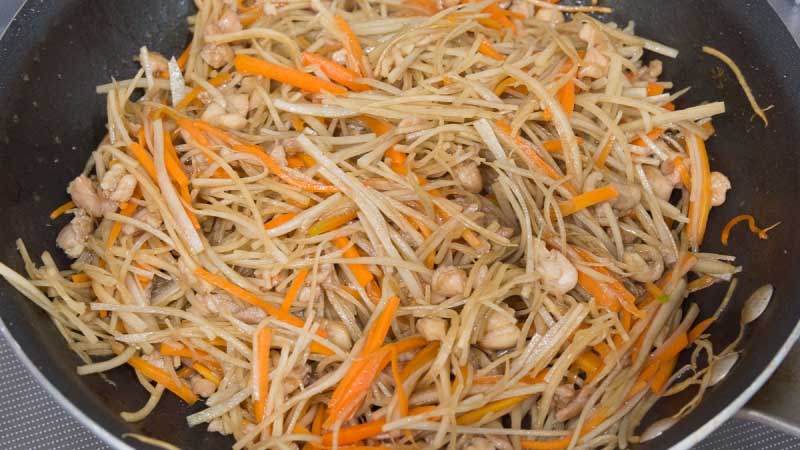
What does burdock root taste like?
Like most other roots, burdock has an earthy texture and a hint of nutty flavor. It is warm and hearty, and if you use honey to sweeten burdock tea, the bitterness can be overpowered and the brew has a rather pleasant taste. Added to meals, burdock can give dishes a firm and chewy texture. Some say the roots taste a bit like dusty artichokes.
II. The history of kinpira gobo
Burdock exists all over the world, however, gobo – a vegetable derived from its roots – is consumed mainly in Asia and especially in Japan. Large gobo trees can be 1-2m long, but when sold they are cut short. Gobo is always cooked before eating and is often eaten in soups and soups.
The most popular gobo dish is Kinpira gobo, in which gobo and carrots are sliced and sautéed with soy sauce, sugar, and even sake. Kinpira gobo is a prime example of a Japanese woman’s housewife tradition and is loved for its crispiness. Using unpeeled vegetables and soaked liquid Shiitake makes a simple, nutritious dish.
The story of the name “Kinpira Gobo” has to go back to the time of “kinpira Joruri”, a famous play performed at the traditional Japanese water puppet theaters of the Edo period, more than 350 years ago. The main character is named Sakata no Kinpira, very strong and sturdy, the name Kinpira is given to this dish because it is thought that Gobo makes the human body strong.
Read more: Most popular Japanese drinks.
III. How to make kinpira gobo
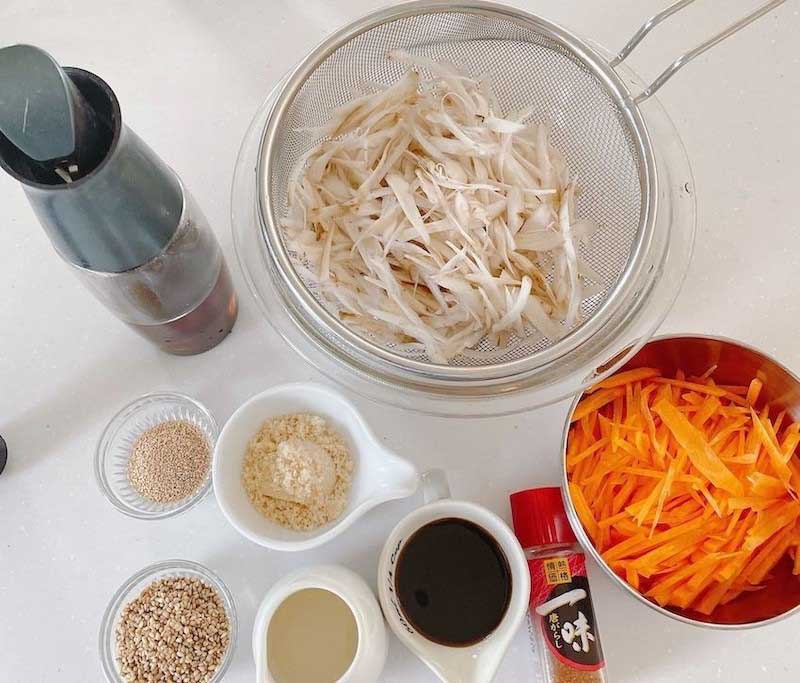
Making Japanese Kinpira Gobo.
Ingredient:
Burdock Root 150g
Carrot 150g
Water (for soaking vegetables)
Sugar: 1 large spoon
Japanese soup powder: 1 teaspoon
Mirin (sweet cooking wine): 1 tablespoon
Soy sauce: 1.5 tbsp
Toasted white sesame seeds: 2 tablespoons
Sesame oil: 1 tablespoon
You can add a little more chili powder if you want the dish to be spicier.
Instructions
- Peel off the bark of the burdock root with the blunt part of a knife. Cut around with uneven spots then shave the tip like a pencil sharpener. Soak in water for 10 minutes.
- Peel the carrots and cut them into long and thin pieces.
- Heat the pan over medium heat. add sesame oil and sauté the ingredients prepared in steps 1 and 2 until the water is drained. Stir-fry until thin slices become soft.
- Add the prepared seasoning and stir-fry on the fire until the vegetables have absorbed the spices.
- Add white sesame seeds and sauté for a while on medium heat.
This kinpira gobo is often used as a side dish to a meal, added to a bento as side dish to balance nutrition and make the meal more perfect. With just the above simple steps, you can cook delicious and nutritious kinpira gobo.
IV. How to preserve burdock
Choose bulbs that are still soiled, wrap them in newspaper and keep them in a cool, dark place. If you have a garden, you should bury it in the ground to be able to preserve it for a long time. When using, it is necessary to remove the mud, wash, and peel off the skin. Store in the refrigerator, you should cover the tubers with a plastic bag, and keep them for about 2-3 weeks. Be careful not to expose the burdock to the wind as it will wilt and harden.
Conclusion
Above our Janbox team has shared information about burdock and how to make kinpira gobo. Please remember that this kinpira gobo dish is very nutritious, healthy, and has no fat at all. If you like the article, please leave a comment and quickly share. We are delighted to receive your comments.
- Website: https://janbox.com.
- Email: [email protected].
- Facebook: https://www.facebook.com/janbox.com.en.

